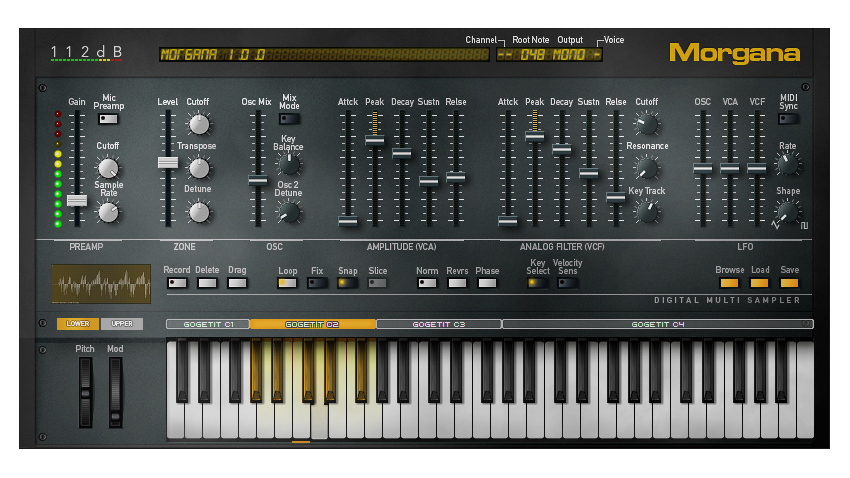How to sculpt sounds using a sampler
Find out how you can get creative with your audio

If you're looking to get creative and take a sound out of its original context, you'd better become familiar with the sampler. Simply put, if you load a sampler with a segment of audio, and you're then able to play that sound up and down the keyboard, as well as manipulate the sound with functions similar to those you'd find on a synthesizer.
Once you've loaded a sample or recording, try out different sample start and end points as you audition the sound. Most samplers allow you to alter these, as well as loop up a small region of an audio file, creating a sustained tone from just a short snippet of audio. If you set a small enough loop length, you'll create a buzzing tone that can be tuned to a musical pitch, turning your sampler into a granular synth.
Experiment with the start/end points and loop lengths, as some creative textures and tones can be created by automating these parameters over time. A 'crossfade' function will generally be on hand to fade the beginning and end points, automatically removing any clicks.
Envelopes and modulation
When altering sounds for a different purpose, make sure you investigate the envelope features and modulation routings available in your sampler of choice. By altering a sound's amplitude envelope, for example, you can create short percussive hits from unlikely sources such as field recordings or even vocal tracks. Creatively modulating a sample's pitch with LFOs or envelopes can generate pitch-falling drum hits or whirring uplifter tones.
A combination of sampled signals and synthesized tones can provide a sound designer with a broad palette of options. This kind of architecture was featured in many late '80s and early '90s hardware instruments - from Korg's M1 to Roland's D-50 and many more besides. You can stack sampler channels and synth instruments in your DAW, or dedicated plug-ins such as Steinberg's PadShop Pro and Camel Audio's Alchemy merge synths and samplers into one single software instrument. It's easier than ever to add a clean, powerful sine sub under your sampled tone, or some synthesized white noise over a dull recording.
For a complete guide to creative sound design check out Future Music issue 281, which is on sale now.
Get the MusicRadar Newsletter
Want all the hottest music and gear news, reviews, deals, features and more, direct to your inbox? Sign up here.
Future Music is the number one magazine for today's producers. Packed with technique and technology we'll help you make great new music. All-access artist interviews, in-depth gear reviews, essential production tutorials and much more. Every marvellous monthly edition features reliable reviews of the latest and greatest hardware and software technology and techniques, unparalleled advice, in-depth interviews, sensational free samples and so much more to improve the experience and outcome of your music-making.










